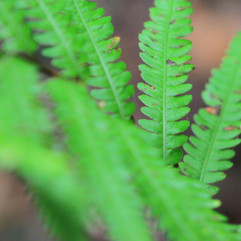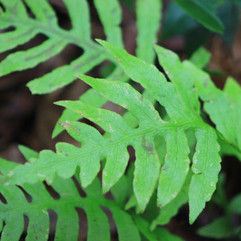Florida's Ferns & a Fascinating Discovery
- Kara Thornton
- May 31, 2023
- 2 min read
Did you know, ferns reproduce via SPORES ?! Just like mushrooms 🍄! And that's just the beginning...
We started taking closer look at ferns in 2022 when we spent a month exploring Florida's extensive coastline. We admired the large variety of ferns in various habitats and noticed that some of those same species thrive here in North Carolina too. One of our favorites found in Florida and in much of the United States is commonly called the "Resurrection Fern." This fern is an epiphyte, just like the Tillandsia, or "Air Plants" we studied in Florida's forests.
According to an informative plaque on our walk through Merritt Island National Wildlife Refuge in Brevard county, FL:
"Ferns are some of the oldest plants, following the algae and mosses. Ferns are different from most plants because they do not have seeds or flowers. They reproduce through spores found on the underside of the fronds. Ferns grow on rocks, trees, on land, and in water."
If you've ever taken a close look at ferns you may have noticed spots along the underside of the leaves... But did you know, those spots are actually clusters of spores? Unlike most plants, ferns do not reproduce via seeds. Instead, they release spores to create new generations!

Pleopeltis polypodioides, "Resurrection Fern" 01/06/22
After learning about ferns' spores we dove in to find out more. We found this video extremely helpful in explaining the break down of a fern's life cycle and the description of 'Alteration of Generations.'
To put it simply, ferns exist in two forms. The ferns we typically see and recognize as ferns are the sporophyte versions... but at the same time smaller versions of these plants are among us, called gametophytes.
Essentially, both versions exist and depend on one another to reproduce and complete the life cycle a fern. How fascinating!
Sources:
.png)















Comments